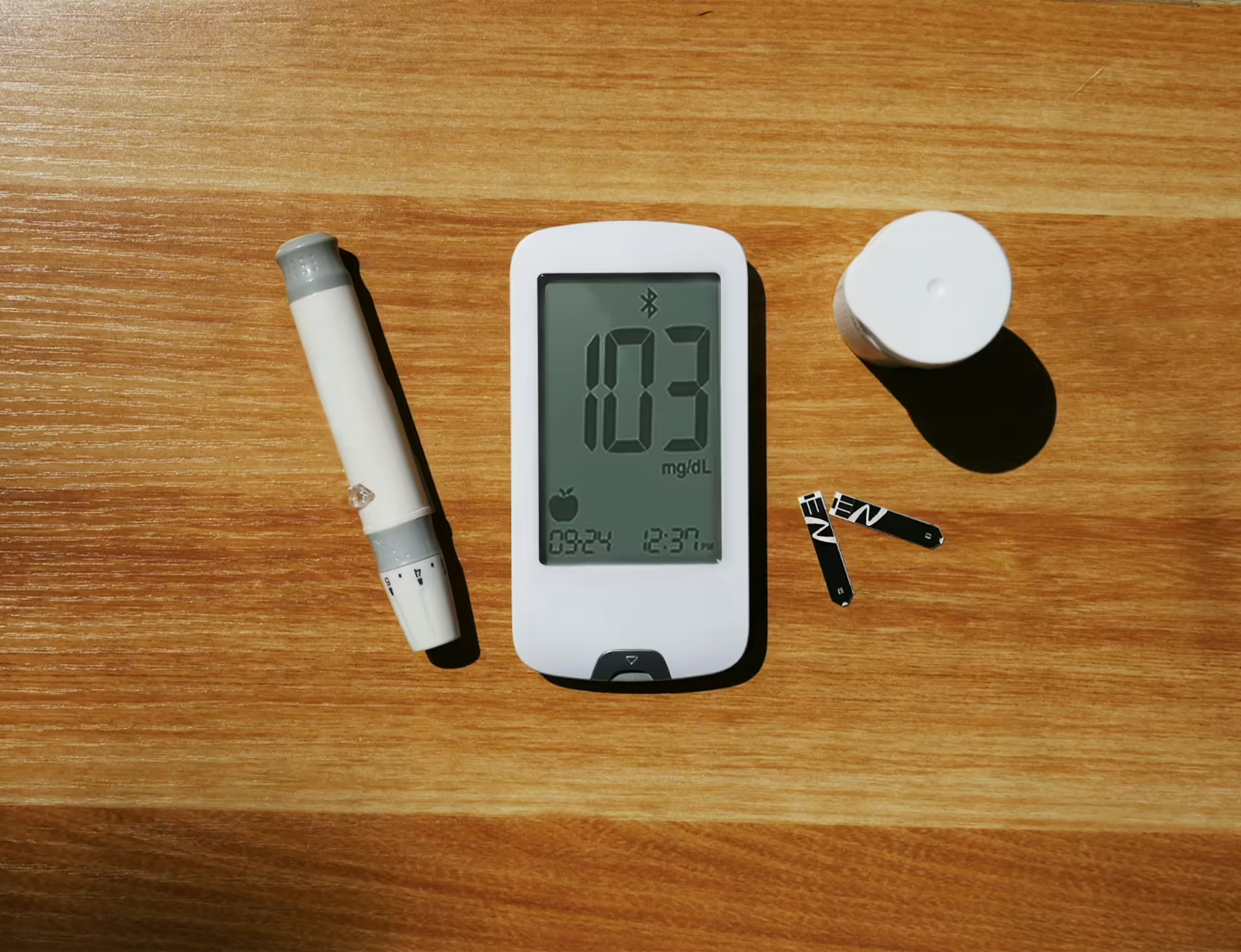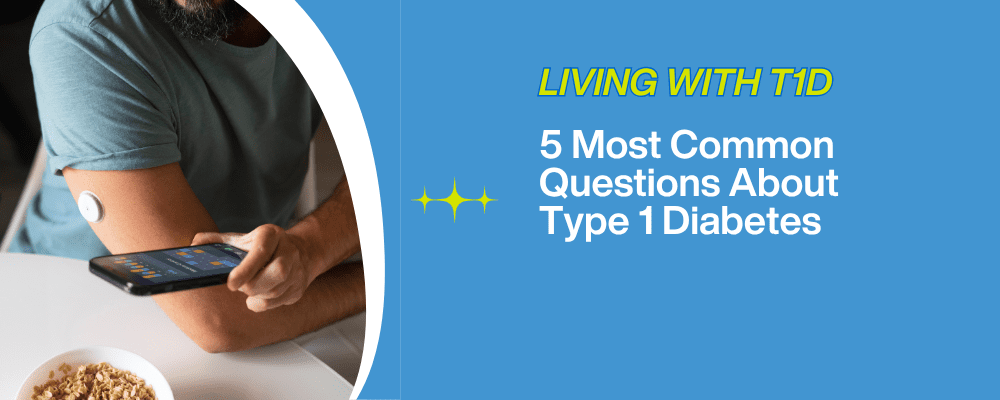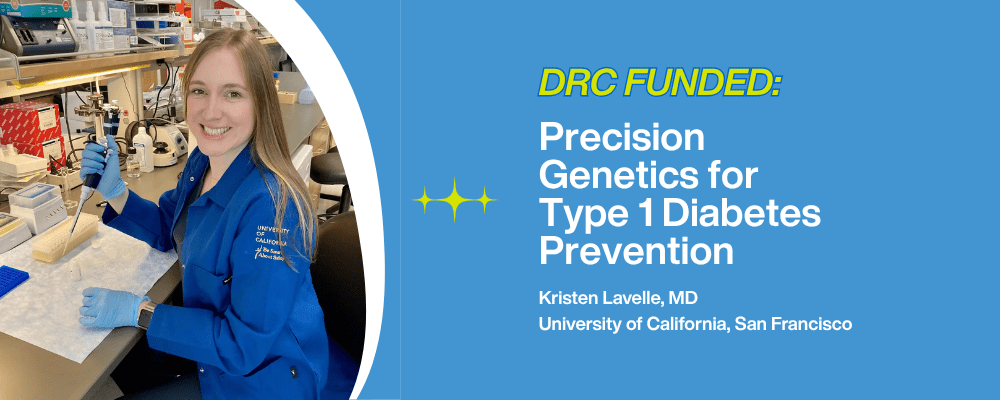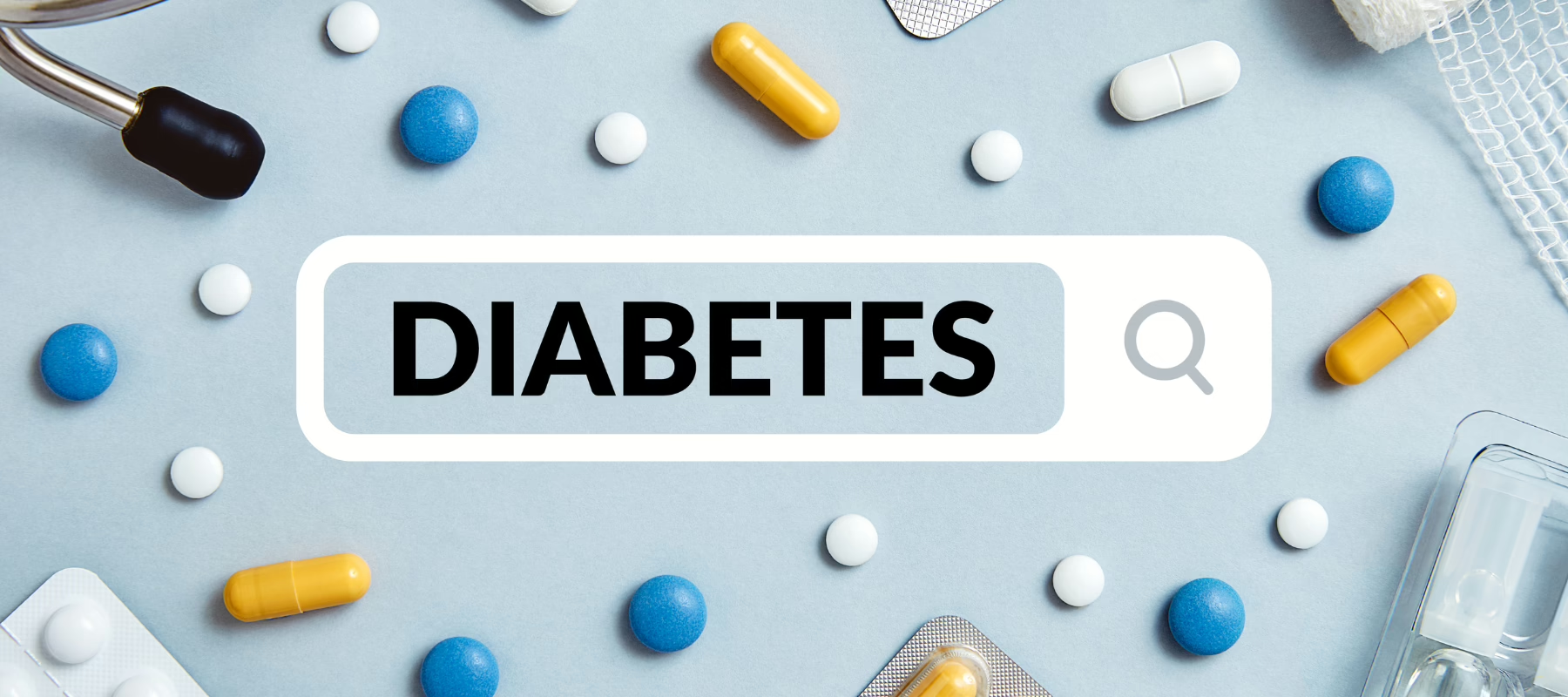November is National Diabetes Month, also known as National Diabetes Awareness Month, a time to bring attention to the challenges faced by those living with diabetes and the importance of supporting research for better treatment options. This month is dedicated to educating the public about the impact of diabetes, especially Type 1 Diabetes (T1D), a condition that affects millions of people worldwide. Understanding the latest T1D statistics is crucial in raising awareness and inspiring action. In this article, we’ll explore what T1D the latest statistics, and how research efforts—such as those supported by the Diabetes Research Connection (DRC)—are playing a critical role in fighting the disease and improving the quality of life of those living with type 1 diabetes.
What is Type 1 Diabetes?
Type 1 Diabetes is a chronic condition where the body’s immune system attacks and destroys the insulin-producing cells in the pancreas. Unlike Type 2 Diabetes, which is often related to lifestyle factors, Type 1 Diabetes is usually diagnosed in children, teens, or young adults. People with T1D are unable to produce insulin, which is needed to regulate blood sugar levels. People with T1D need to rely on insulin therapy, such as regular injections or an insulin pump, to survive.
While the exact cause of T1D is unknown, having a family history of diabetes can increase the risk of developing the condition. Health care providers play a crucial role in diagnosing and managing Type 1 Diabetes, offering guidance on medication, lifestyle adjustments, and monitoring health outcomes.
T1D is a lifelong condition, and while it can be managed with medication and lifestyle adjustments, there is currently no cure. This is why raising awareness, especially during November, which is National Diabetes Awareness Month, is essential. With millions of people living with T1D worldwide, increasing knowledge and funding for research could bring us closer to a cure.
Want to help raise awareness for Type 1 Diabetes?Learn how you can support research efforts this National Diabetes Awareness Month.
Managing Blood Sugar
Managing blood sugar levels is crucial for people with diabetes to avoid serious health problems. Blood sugar, or glucose, is the primary source of energy for the body’s cells and keeping it within a healthy range is essential. Collaborating with a health care team is important to manage blood sugar levels effectively. Here are some practical tips for managing blood sugar:
- Monitor Regularly: Use a glucometer or continuous glucose monitor to check your blood sugar levels regularly. This helps you understand how different foods, activities, and medications affect your glucose levels.
- Medication Adherence: Take your medications as prescribed by your healthcare provider. This includes insulin and any other medications that help manage your blood sugar.
- Balanced Diet: Eat a diet that is low in sugar and refined carbohydrates. Focus on whole foods like vegetables, fruits, lean proteins, and whole grains to help maintain stable blood sugar levels.
- Physical Activity: Engage in regular physical activity, such as walking or jogging. Exercise helps lower blood sugar levels and improves overall health.
- Stay Hydrated: Drink plenty of water throughout the day. Staying hydrated helps your kidneys flush out excess sugar through urine.
By following these tips, you can better manage your blood sugar levels and reduce the risk of complications associated with diabetes.
Healthy Habits for T1D Management
Type 1 Diabetes (T1D) is a chronic disease that requires diligent management to prevent serious health problems. Adopting healthy habits can make a significant difference in managing T1D effectively. Here are some key habits to incorporate into your daily routine:
- Routine Checks: Develop a consistent routine for checking your blood sugar levels and administering insulin. Regular monitoring helps you stay on top of your condition and make necessary adjustments.
- Stress Management: Stress hormones can increase blood glucose, so managing stress is vital. Techniques like mindfulness, deep breathing, or hobbies that promote relaxation can positively impact blood sugar levels.
- Educate and Advocate: Knowledge empowers better decisions. Staying informed about the latest diabetes research and advocating for oneself in healthcare settings can lead to improved outcomes and increased confidence in managing diabetes.
- Find a Support System: Having friends, family, or joining a diabetes support group can provide emotional and practical support. Connecting with others who understand the daily realities of Type 1 Diabetes can make a huge difference.
Incorporating these healthy habits into your daily life can help you manage T1D more effectively and improve your overall quality of life.
Working with Your Healthcare Team
Collaborating with your healthcare team is essential for effective diabetes management. Here are some tips for working with your healthcare providers to ensure you receive the best care possible:
- Open Communication: Communicate openly and honestly with your healthcare provider about your diabetes management plan. Share any concerns or challenges you face.
- Ask Questions: Don’t hesitate to ask questions and seek clarification if you don’t understand something. Your healthcare team is there to help you.
- Track Your Levels: Keep track of your blood sugar levels and share this information with your healthcare provider. This data is crucial for making informed decisions about your treatment plan.
- Regular Appointments: Attend regular appointments with your healthcare provider to monitor your progress and make necessary adjustments to your management plan.
- Personalized Meal Plan: Consider working with a registered dietitian or certified diabetes educator to develop a personalized meal plan that meets your nutritional needs and helps manage your blood sugar levels.
By working closely with your healthcare team, you can create a comprehensive management plan that addresses your unique needs and helps you maintain optimal health.
The Latest T1D Statistics
The latest statistics on Type 1 Diabetes show the increasing prevalence of the disease, especially in children and young adults. According to the Center for Disease Control approximately 2.2 to 3.8 million Americans are currently living with Type 1 Diabetes. This includes over 200,000 youth under the age of 20 who are diagnosed with the condition. Around 200,000 children and adults are diagnosed each year; T1D diagnoses have risen dramatically, with a 30% increase in the annual number of those diagnosed since 2017 and a 100% increase projected by 2040.
Globally, the World Health Organization reports a steady increase in the number of T1D diagnoses in both developed and developing countries. In the U.S., Type 1 Diabetes is the most common form of diabetes among children, and it’s expected that the number of cases will continue to grow as more children and young adults are diagnosed.
Statistics not only help us understand the current scope of T1D but also point to emerging trends, such as the rising number of cases in specific age groups or regions. These trends are critical for directing research and healthcare efforts, including innovative solutions like the Bioengineered Pancreas in the Treatment of Type 1 Diabetes.
Interested in learning more about how T1D statistics impact research?Stay connected and discover ways to make a difference in T1D treatment and care.
Raising Awareness and Taking Action
November is National Diabetes Month, a dedicated time to raise awareness about the physical and mental challenges of diabetes and diabetic complications. Diabetes is a chronic disease that affects millions of Americans, including both adults and youth. Understanding the risks and taking proactive steps to prevent or manage the condition is crucial.
During National Diabetes Month, we focus on educating the public about the impact of diabetes and the importance of early detection and management.By being informed, individuals can take steps to prevent diabetes recognize early symptoms of type 1 diabetes or manage it effectively if they are already diagnosed.
Early detection of type 1 diabetes is vital. Symptoms of type 1 diabetes include increased thirst, frequent urination, unexplained weight loss, blurred vision, and fatigue. Symptoms can appear suddenly, especially in children, and can seem similar to the flu. A medical professional is necessary to adequately diagnose type 1 diabetes. For those already living with diabetes, managing blood sugar levels through medication, diet, and exercise is essential to avoid serious health complications.
National Diabetes Month is also a time to support research efforts aimed at finding better treatments and ultimately a cure for diabetes. Looking Beyond Beta-Cells for Management of T1D is an important focus, highlighting the need for innovative approaches. By raising awareness and taking action, we can make a significant impact on the lives of those affected by this chronic disease.
Join the movement this National Diabetes Month and take steps to prevent diabetes and support those living with the condition. Together, we can make a difference.
DRC’s Contribution to T1D Research
The Diabetes Research Connection (DRC) is actively funding cutting-edge research aimed at improving the lives of those with Type 1 Diabetes. By supporting early-stage research projects, DRC helps researchers explore innovative treatments, therapies, and potential cures for T1D. For example, studies funded by DRC are exploring new ways to improve insulin delivery systems, find more effective treatments for complications, and even develop immune-based therapies that could help reverse the condition.
These research efforts are informed by the latest T1D statistics, as trends in diagnoses and patient needs highlight areas of research that need urgent attention. By aligning their funding with these data, DRC is ensuring that the most promising studies are prioritized.
Want to support life-changing T1D research? Discover how DRC is advancing the search for a cure and how you can get involved.
Why It’s Important to Track T1D Statistics
Tracking T1D statistics is essential for guiding public health decisions and shaping the future of diabetes research. Monitoring data such as the number of diagnoses, age of onset, and regional trends helps healthcare providers allocate resources and ensure that the most pressing issues in T1D care are addressed. Monitoring oral health is also crucial, as proper oral care can significantly influence overall health outcomes for individuals with diabetes.
For organizations like DRC, these statistics inform where funding is most needed, helping to prioritize high-impact research. Furthermore, continuous tracking allows us to measure the effectiveness of current treatments and ensure that new research findings lead to meaningful improvements in care. Without this vital data, it would be difficult to focus research efforts on the areas that will have the greatest impact on improving outcomes for people with T1D.
Ready to take action this National Diabetes Awareness Month? Join DRC’s efforts to track and support critical T1D research.Resources and Support
Living with diabetes can be challenging, but there are many resources and support systems available to help you manage your condition. Here are some valuable resources and support options:
- American Diabetes Association (ADA): The ADA is a leading organization in the fight against diabetes. They provide education, advocacy, and support to people affected by diabetes. Visit their website for a wealth of information and resources.
- National Diabetes Education Program (NDEP): The NDEP is a partnership between the Centers for Disease Control and Prevention (CDC) and the National Institutes of Health (NIH). They offer education and resources to help people manage their diabetes effectively.
- Diabetes Support Groups: Joining a diabetes support group can provide a sense of community and connection with others who are living with diabetes. Sharing experiences and tips can be incredibly beneficial.
- Online Resources: There are many online resources available to help you manage your diabetes, including websites, blogs, and social media groups. These platforms offer a wealth of information and a sense of community.
By utilizing these resources and support systems, you can find the help and encouragement you need to manage your diabetes effectively and improve your overall well-being.
Make a Difference in the Fight Against T1D
National Diabetes Awareness Month is a powerful reminder of the challenges faced by those living with Type 1 Diabetes and the importance of supporting research efforts. World Diabetes Day, observed on November 14, is another important event that raises global awareness and support for diabetes management. Understanding the latest T1D statistics allows us to better target resources, funding, and care. By working together, we can help advance the search for better treatments and a potential cure for T1D.
As we reflect on the significant role that statistics play in shaping the future of diabetes care, it’s important to support organizations like DRC, which are funding groundbreaking research to improve the lives of those with T1D and work to Preserve Insulin Secretion in People with T1D. Whether by donating, spreading awareness, or getting involved in research efforts, your support can make a lasting impact on the future of T1D care.
This November, make a difference in the fight against Type 1 Diabetes.Support DRC’s research initiatives and help bring us closer to a cure.




